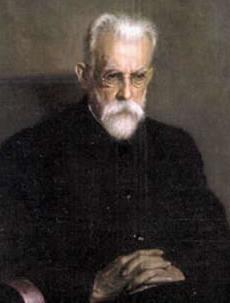One of the greatest scientists of the 20th century, the author of world-famous works on mineralogy and geochemistry. Starting from the 10s of the last century, V.I. Vernadsky is increasingly focusing on the biosphere of the Earth. Indeed, many geological processes are based on the influence of solar heat and atmospheric oxygen. Not only organic minerals (oil, coal, hydrates, etc.) are of biological origin. Inorganic minerals also tend to reflect the impact of biomass on them.

Since the 20s, he talks about the influence on the course of natural processes not specifically of nature, but of purposeful human activity. Through their work, the working masses imperceptibly and gradually became a number of powerful geological forces. So the concept of noosphere was born. Vernadsky understands by it the modern biosphere, of which mankind is considered a part. Before people, he said, before their thoughts and work, the question was raised about updating the biosphere in favor of civilization as a single organism.
As determined by V.I. Vernadsky, the noosphere is the latest geological shell of the planet, which is created on the basis of a scientific approach. It is considered as the result of the action of two revolutionary processes united in a single stream: in the field of scientific thought and in the field of social relations. Therefore, the noosphere according to Vernadsky is created as a result of a strong union of those factors that serve as the basis for these processes, in other words, the unity of science and the working masses.
Vernadsky, whose noosphere, as a teaching, is still developing today, connects it with the action of even more phenomena: the unity of the biosphere and humanity, the unification of the human race, the activities of people are planetary in nature, it is also commensurate with geological processes, the purposeful development of forms of communication, striving for peace between nations, unprecedented successes of science and technology. Generalizing these factors at once, drawing an inextricable link between the further evolution of nature and the development of civilization, V.I. Vernadsky "noosphere" as a concept.

However, the views of the scientist did not coincide with the then ideology of the state. For example, in the Small Soviet Encyclopedia (1934) it was described as professing an idealistic philosophy. In scientific works, he is characterized by the ideological nature of the "neutralism" of science, he defends religion, mysticism, while denying materialistic dialectics. In addition to reason, as Vernadsky argued, the noosphere also has the driving force of the spirit of the people, or their "biofield." This remark is not devoid of soil, since it has been observed that natural disasters occur in places of popular unrest. And only these days, these assumptions received experimental confirmation.

Vernadsky’s ideas were ahead of the author’s life. Only now, in conditions of critical aggravation of problems of a global nature, his words become clear. Democracy, a democratic approach to the structure of public life, the evolution of culture, science and the revival of popular life, a thorough revision of the approach to environmental management - all this makes up the noosphere. The fate of the Earth and the fate of mankind are one fate.